The Triangle Choke, or Sankaku-Jime, is likely the most recognized strangle in Jiu-Jitsu. The technique’s history, origin, and development are still hotly debated. However, it certainly predates its first use in the UFC (used by Jason DeLucia to defeat Scott Baker in UFC 2) in 1994. Some argue that it can be dated back to 1921 when its first recorded use was by Masaru Hayakawa in a Kosen Judo tournament.
The triangle has become a hallmark of Jiu-Jitsu and is often one of the first techniques a beginner will see entering any academy. With that said, many of the finer details of the strangle are still overlooked.
So what is the Triangle choke? Essentially, we’re using our legs to strangle our opponent. By isolating their neck and shoulder, we cut an angle and apply a squeeze with our legs that cut off blood circulation to our opponent’s brain. My goal in this article is to help you better understand the crucial points required to execute an effective triangle.
How To Perform A Triangle Choke: Step By Step
Step 1: Separating The Arms
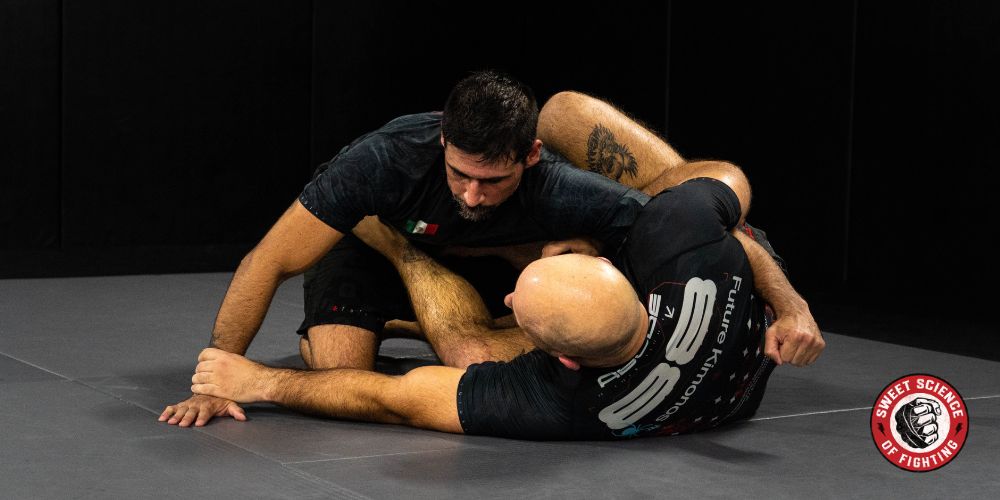
Our first step is to separate our opponent’s arms. We want to achieve a situation where one arm is in, and one arm is out. This will allow us to get flush around our opponent’s neck and one shoulder to achieve the strangle.
In this step, you can see how I use an inside wrist grip on the far side arm and an over-wrap on the near side arm to force my uke to base out wide. This will give me the space to shoot my hips up and achieve a one-arm in/one-arm out situation.
Compromising your opponents’ base is always a sound strategy, especially from your guard. Once their base is compromised and unbalanced, they will be forced to post with their hands in places that we can capitalize on to set up triangles or other submissions and sweeps.
Step 2: Clear The Arm
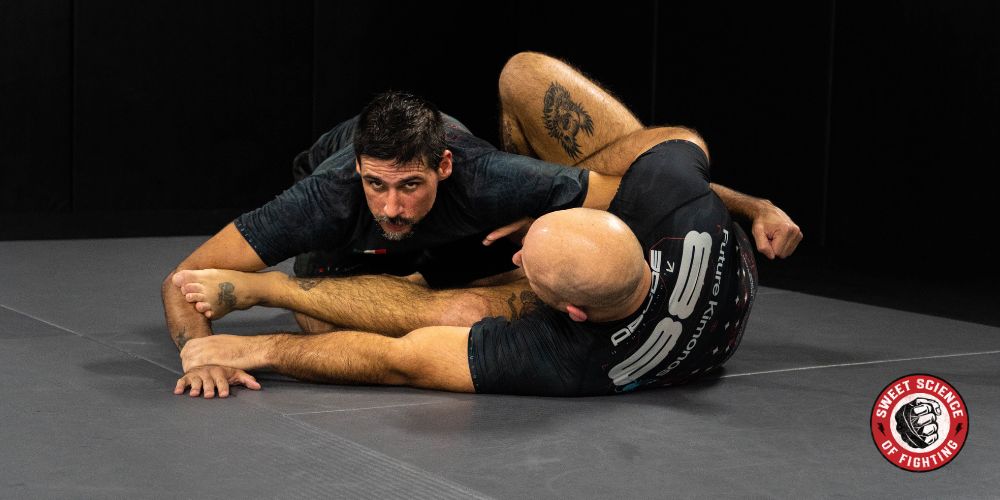
You must clear the secondary arm (the arm not involved in the choke). This is an intermediate position, not a place I want to camp out. Clear that arm as quickly as possible, round the neck, and create your trap.
I place my foot in the crook of my uke’s elbow to further extend the separation between his arms and prime myself to shoot that same leg up and around his neck.
Step 3: Turn The Corner
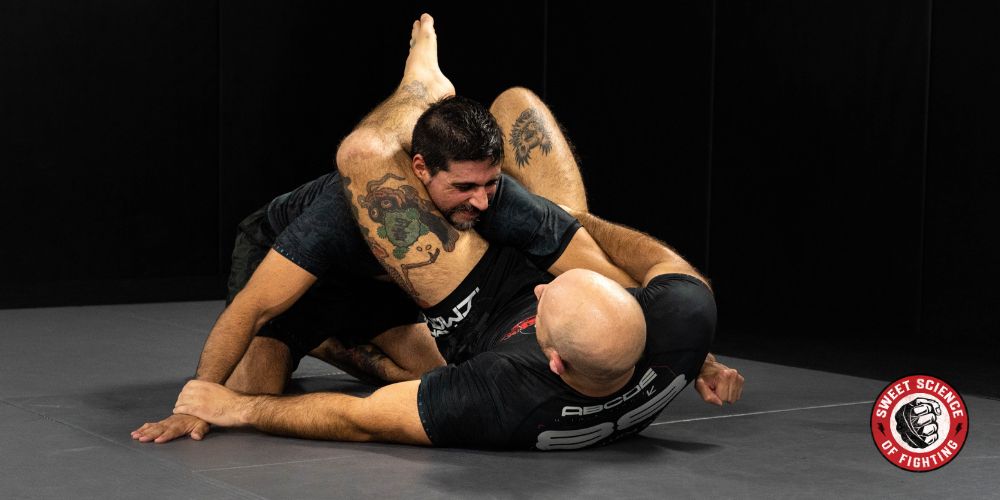
Once I shoot my leg up and around his neck, you can see that I am ‘Turning the corner’ with my leg; my heel starts to move off line across my uke’s back.
My knee should also stay higher than my uke’s shoulder line to prevent a stack and ensure I am flush against his neck. Placement of your primary leg (the leg flush around his neck) is imperative for getting a tight strangle, so make sure the hamstring stays pasted to their neck!
5 Step Blueprint To Build A BJJ Strength Workout To Demolish Your Opposition
Learn how to plan your strength training to maximize transfer to the mats.
Step 4: Angle Off
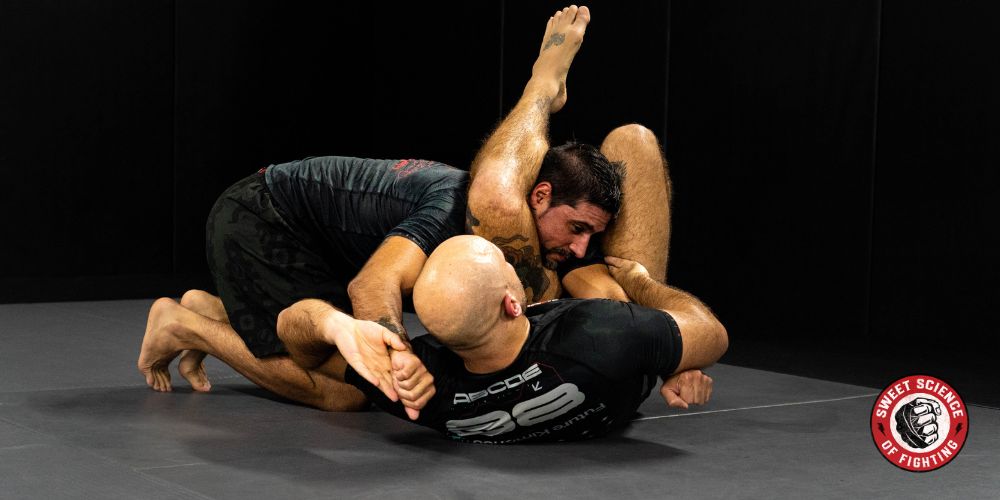
Now it’s time to angle off to the side. Notice how I have rotated my body almost 90 degrees. This angle cut is another imperative detail for achieving a tight strangle.
I can use my secondary leg (the leg not flush to my uke’s neck) to push off either the hip or floor to make this rotation. Additionally, advanced practitioners should aspire to use their core, hips, and knees to create rotation here to keep the isolated shoulder secure throughout the adjustment.
Notice that I have also allowed my thigh to come around the front of my uke’s shoulder. The less of his shoulder mass that I have inside of the triangle, the better the strangle will be.
Step 5: Securing The Lock
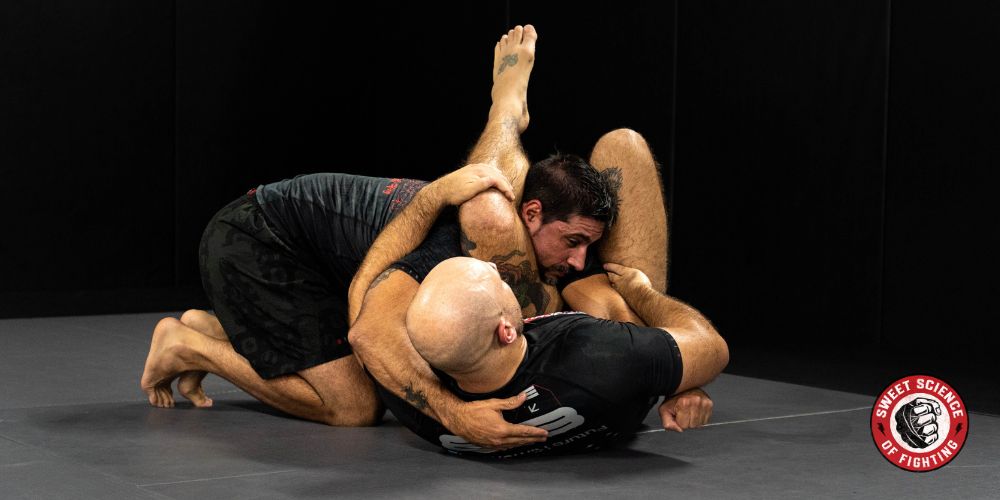
It’s time to secure the triangle. I shoot my secondary leg up high and back heel down with the primary leg. I want my ankle to meet the back of my knee to secure the lock before I start applying the squeeze. Once again, this must be a quick transition, no time to camp out here!
Step 6: Finishing The Triangle
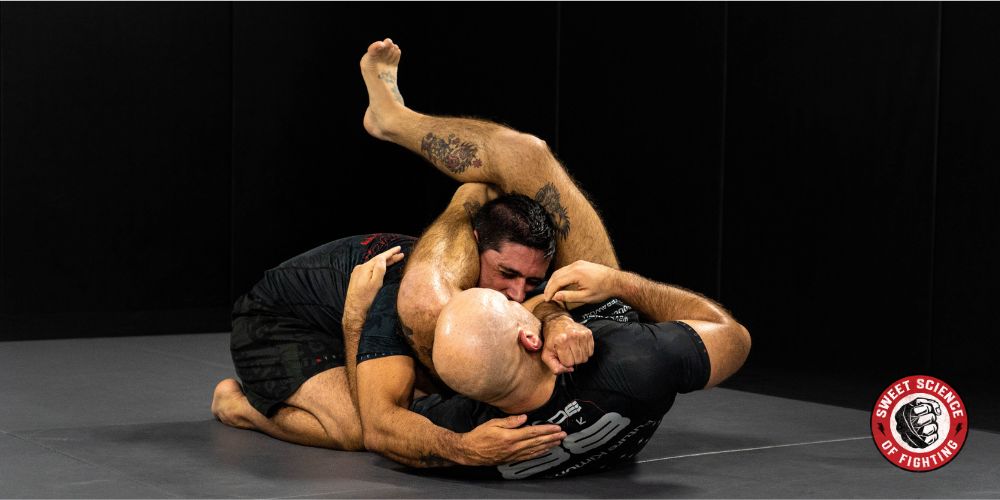
Now that I have my lock, I can begin to apply pressure! I back heel down with the secondary leg and start to bring my knees towards one another. With the correct angle achieved and the lock completed, you can apply a lot of force with your legs. A good, sustained squeeze should elicit that tap from your opponent.
Gi vs. No-Gi Triangle Choke Setup Differences
No-gi is much more dynamic and will require you to move around your opponent far more to achieve the correct angles required for a successful triangle.
In the gi, anchoring grips on the collar and sleeve make it more effective to lock the opponent in place and manipulate their posture.
Using the gi, most triangle entries develop from collar & sleeve grips. The attacker can use these grips to control the inside space and create the arm-in/arm-out scenario discussed in the step-by-step guide above.
After that, the setup and execution of the triangle is pretty much the same in the gi as it is for no-gi. Whenever you can create isolation around one neck and one shoulder, you can find a way to create the angles for a triangle.
With that said, the best can do both! By controlling the inside space (between the ribs and elbow) and creating scenarios where the opponent has one arm in, and one arm out, triangles become much more readily available to attack.
How Does The Triangle Choke Work?
The Triangle Choke is a strangulation in which we use our legs and the opponent’s arm to cut off circulation to the brain.
By placing our leg flush against the neck of the opponent, locking our legs, and applying pressure to the trapped arm and shoulder, we create an immense amount of force that prevents blood from reaching the brain. This can render an opponent unconscious in a matter of seconds.
How To Escape The Triangle Choke
Step 1: You’re In Trouble!
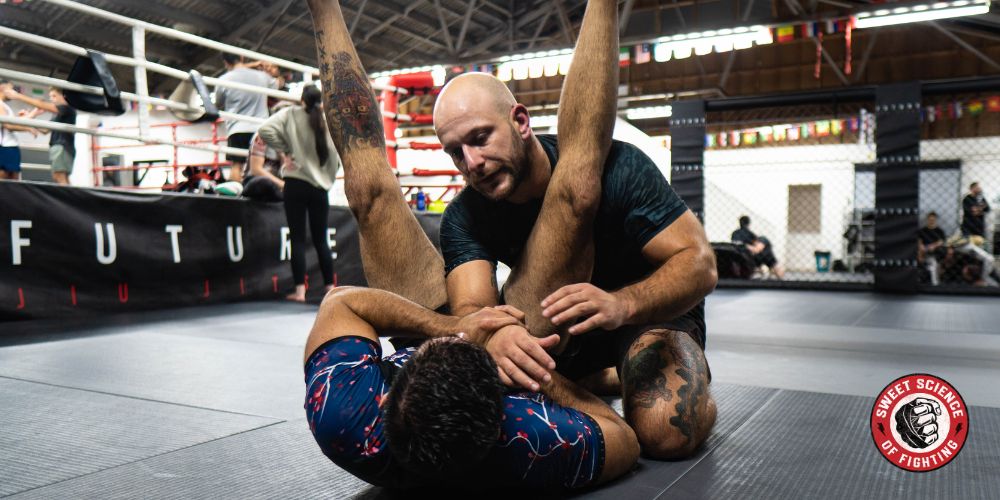
So, you ended up in an arm-in/arm-out situation. Maybe your opponent put you there; perhaps you did it to yourself. Either way, your opponent is shooting their hips up and putting you in the triangle. My first recommendation is not getting here, but nevertheless… you’re here now, so what should we do?
Step 2: Get Moving!
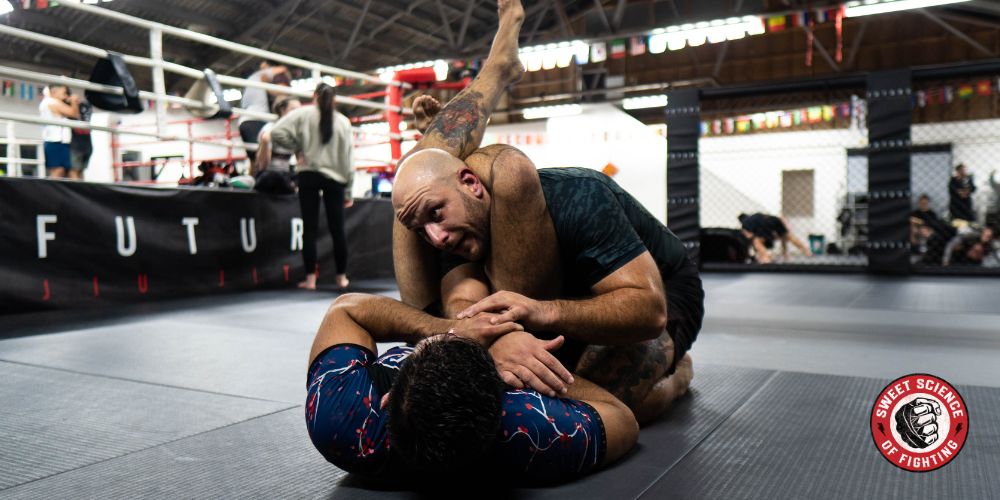
I cannot stress how bad things are for you here. Honestly, your options are very limited if you let your opponent get this far. You better start fighting to regain what little control you can. Use your secondary hand (the one not caught in the triangle) to start stripping your opponent’s grips on your primary arm.
Otherwise, you’re potentially getting arm barred. Your opponent also wants to keep your primary arm trapped across his body and will likely commit at least one hand to keep your arm here. If you want any chance at escaping here, you’ll need to free your hands.
Step 3: Get Two Hands On The Knee
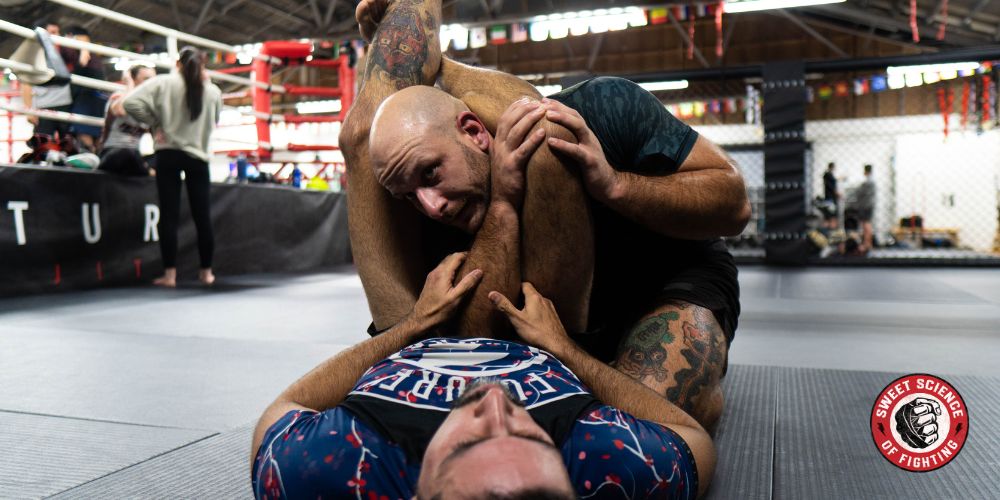
Now that your hands are free, get some purchase in and around your opponent’s primary knee. Try to push the knee away from your neck to provide you with a bit of room.
Remember that if that leg is flush with your neck, things are not looking good for your ability to get out or even stay conscious for very long. This will give you some space and buy you some time, but now we need to start upsetting his angles.
Step 4: Kill The Angle
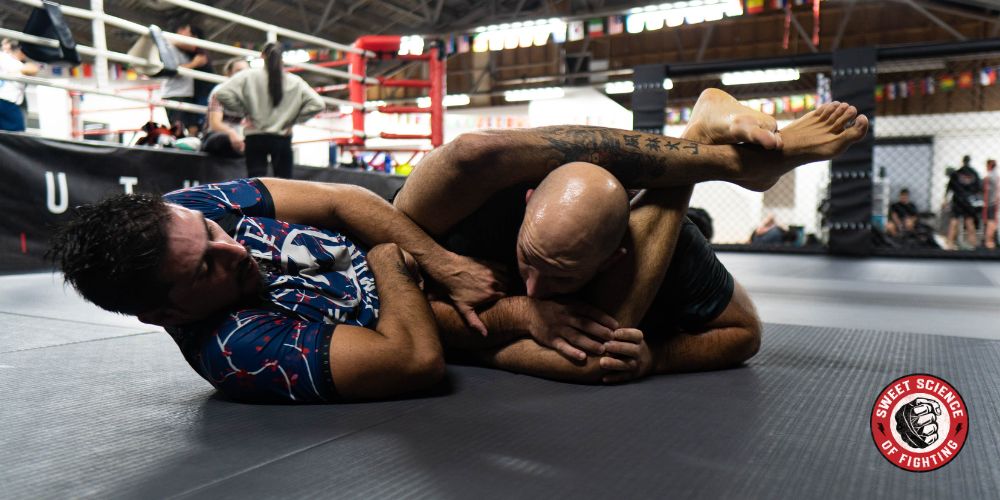
With both hands still on the knee, push the primary leg to the floor. The aim is to kill your opponent’s hip angle and the bite of his primary leg around your neck.
As you can see, there is significantly more space inside the lock now than before, and my trapped shoulder is nearly completely back between his legs. I’ve made myself some space, alleviated the pressure of the choke, killed his angle, and bought myself the time to now deal with the lock.
Step 5: Get Behind The Leg
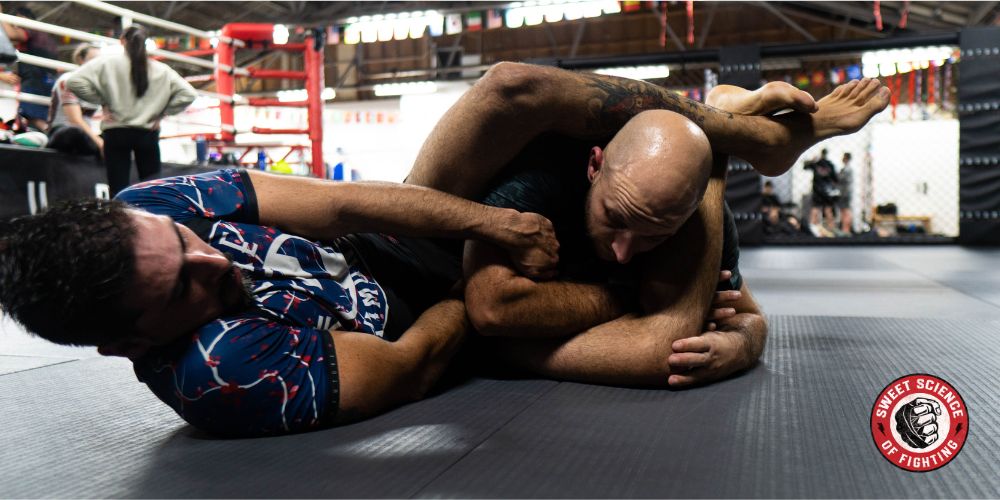
I will start getting behind the hamstring/ knee of the primary leg. I’ve fed the hand of my trapped arm behind the leg to remove my opponent’s ability to recover the choke and the potential armbar threat. From here, I will start working my head and shoulder free from the lock.
Step 6: Head Out!
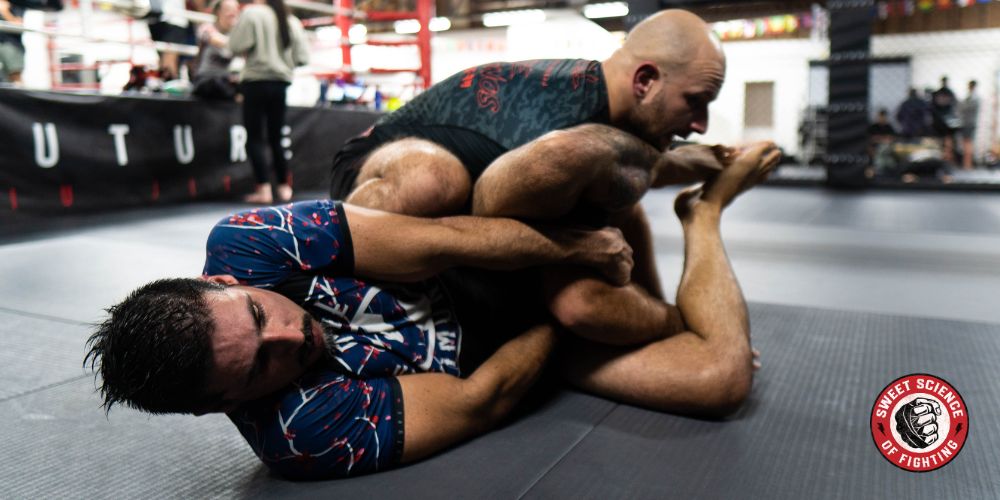
There should be adequate space to remove my head at this stage. I want to peel away the primary leg and start peeking out and away with my head and shoulder. Notice I’ve also come up to my foot on the near side leg; as I turn the corner, I use the knee to kill my uke’s hips to prevent him from re-entering a triangle and limiting the scramble.
Step 7: Posture Up And Away
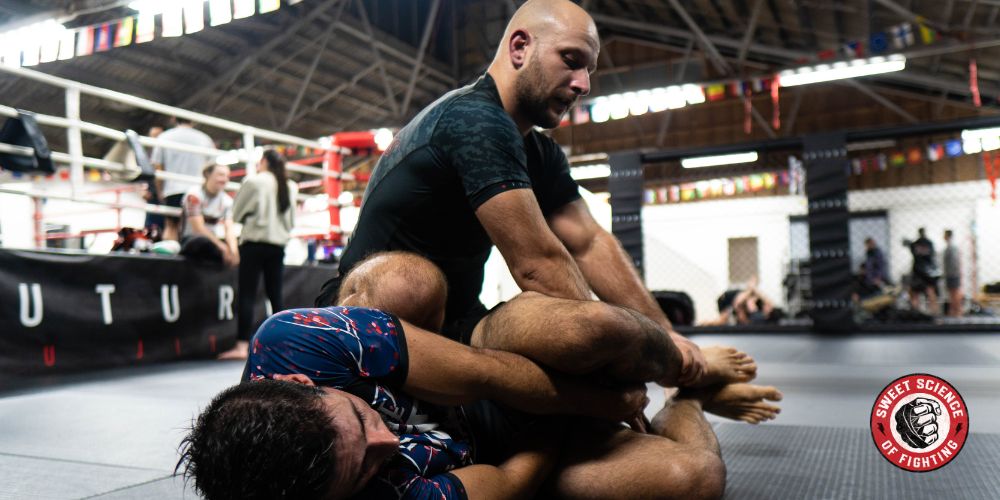
Now that my head and shoulder are free, I want to posture up and away from the danger of another triangle or submission attempt. Congrats! You’re now out of a triangle, and you’ll live to tap another day.
Two Important Triangle Considerations
Look, I know you’re going to hate me for saying this… But the best defense to a triangle is not getting caught in one in the first place! Prevention is far better in this case than cure. The nature of the triangle means that there are far more options for the attacker than for the defender.
Your posture is ruined, your base is compromised, and you’re trying to fight two legs that are anatomically much stronger than a single (or even both) arm! Here are two considerations that will help you not get a triangle in the first place:
One Arm In, One Arm Out
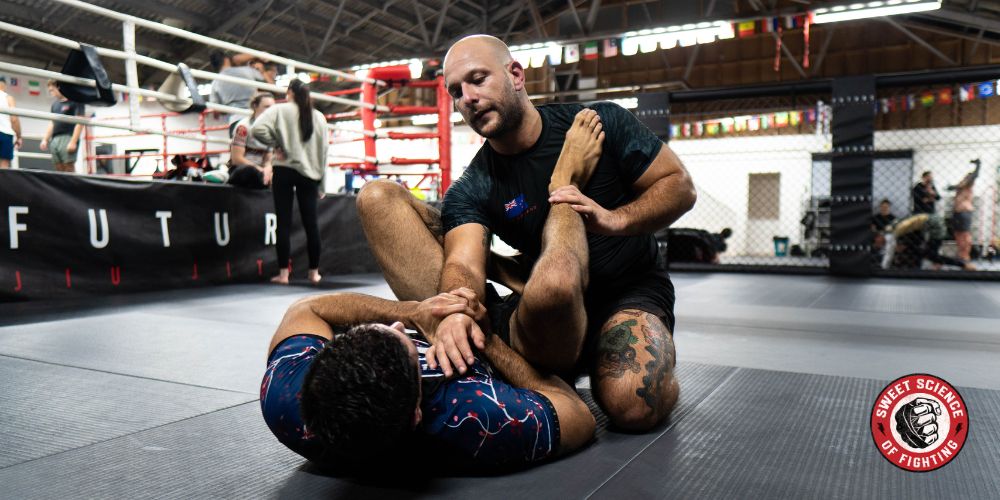
Simply put, avoid this scenario if you want to prevent yourself from getting triangled. Don’t put one arm inside your opponent’s legs, and be aware of situations where your opponent may be setting you up for an arm-in/arm-out situation. This should spell DANGER against any decent opponent.
Both Arms In Or Both Arms Out
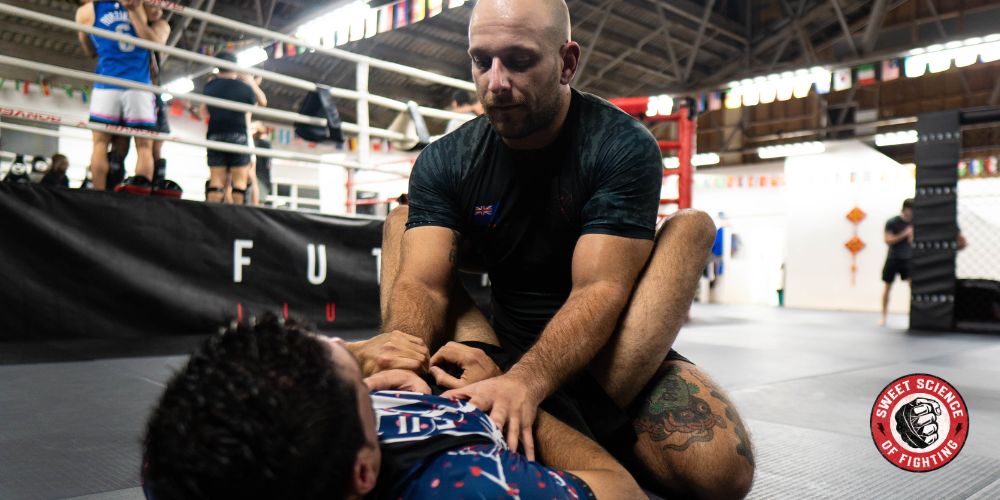
You are far more effective and safe operating from a position where you have either both arms inside your opponent’s legs or outside.
You can hand fight more effectively, posture up better, and operate over your base with stability. This has to be one of my biggest recommendations if you operate from within your opponent’s guard.
Triangle Choke Variations
From Mount
The triangle from the mount is an excellent option in both gi & no-gi. It offers us a useful pathway to choke the grounded opponent in a position where we’ve already established control and a dominant top position. When applied correctly, we can execute the technique without risking all our hard work to get to a dominant position.
Back Triangle
Triangles from the back are another great alternative. Against wary opponents who might deny hand fights and rear naked chokes, we can very readily create arm-in/arm-out positions that present us with opportunities for triangles.
Frequently Asked Triangle Choke Questions
Does The Triangle Choke Hurt?
The pressure generated by the Strangle can hurt, yes. There are a lot of nerves that run through the neck and shoulder that will likely fire when pressure is applied. However, a well-applied triangle can often create a feeling of building pressure rather than pain.
How Does The Triangle Choke Make You Pass Out?
The Triangle Choke will render you unconscious by cutting off blood circulation to your brain. Even a person with average musculature and flexibility can apply a triangle with enough force to completely cut off circulation for long enough to render someone unconscious.
Summary
Jiu-Jitsu is often called “The Gentle Art,” a title that sometimes seems at odds with the physicality of such an intensive martial art and combat system. However, I feel that within the Triangle Choke lies much larger themes that reveal why Jiu Jitsu has earned that title.
The finesse required to finish a Triangle is often beautiful to behold. The precision of the angles required, the lack of muscular strength to apply, and the smoothness of execution all culminate in a very sanguine aura to the technique.
For every variation to the choke, there are numerous style considerations and preferences made by the practitioner applying it that can see the technique reinterpreted differently by almost every body type; be it small or large.
Like a classical piece of music interpreted differently by each musician that plays it, the triangle choke shows the same level of diversity and depth.
In short, the triangle choke is a classic and effective technique. It’s often considered a hallmark of jiu-jitsu and is often taught to beginners very early on… yet it is still employed by the best in the world!

